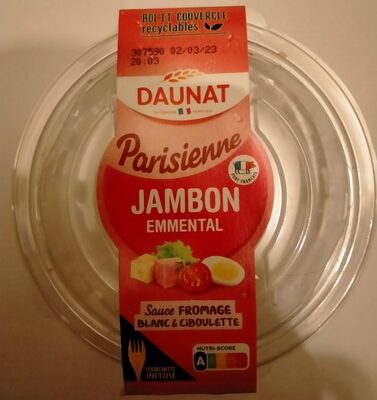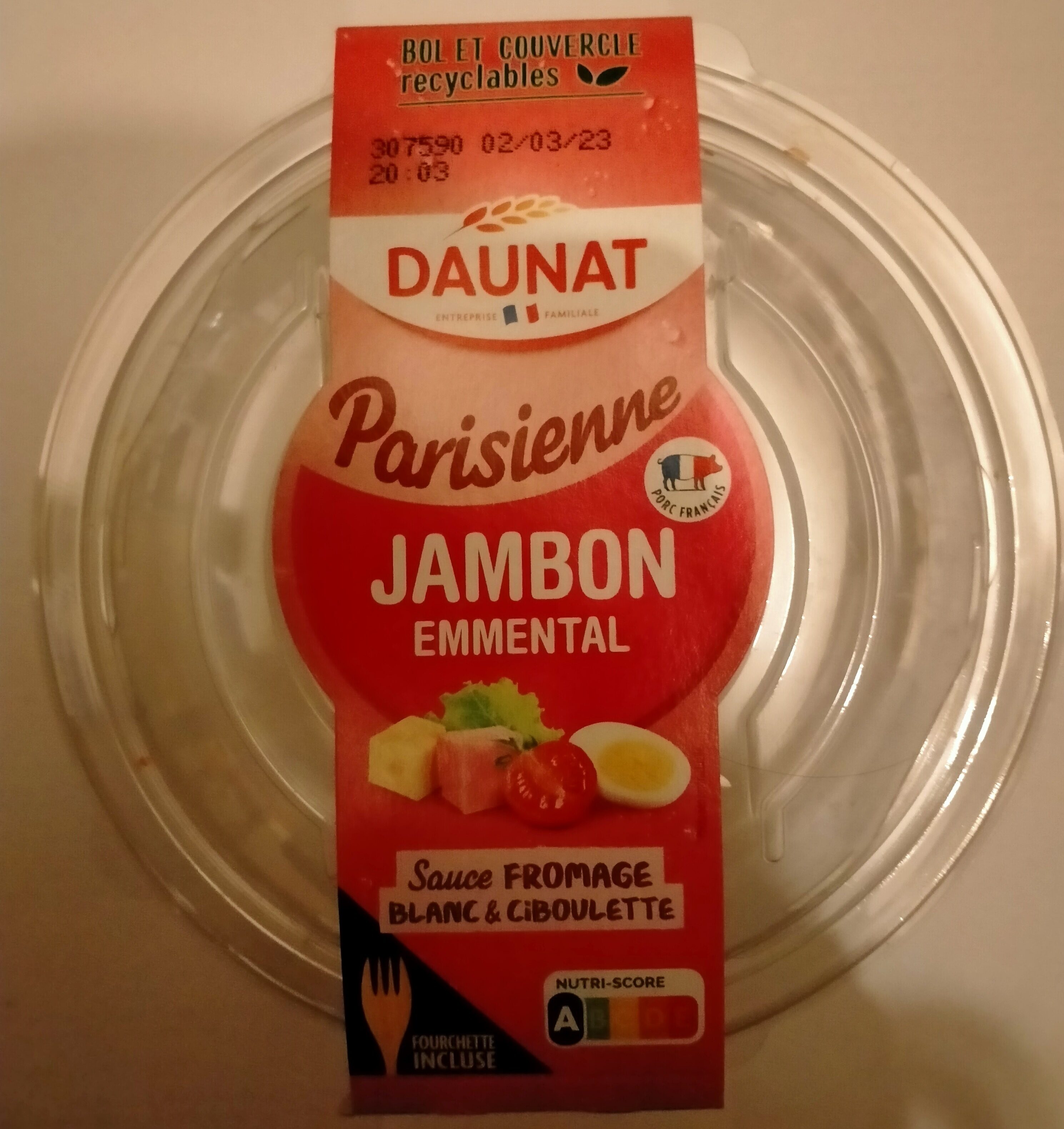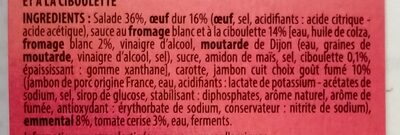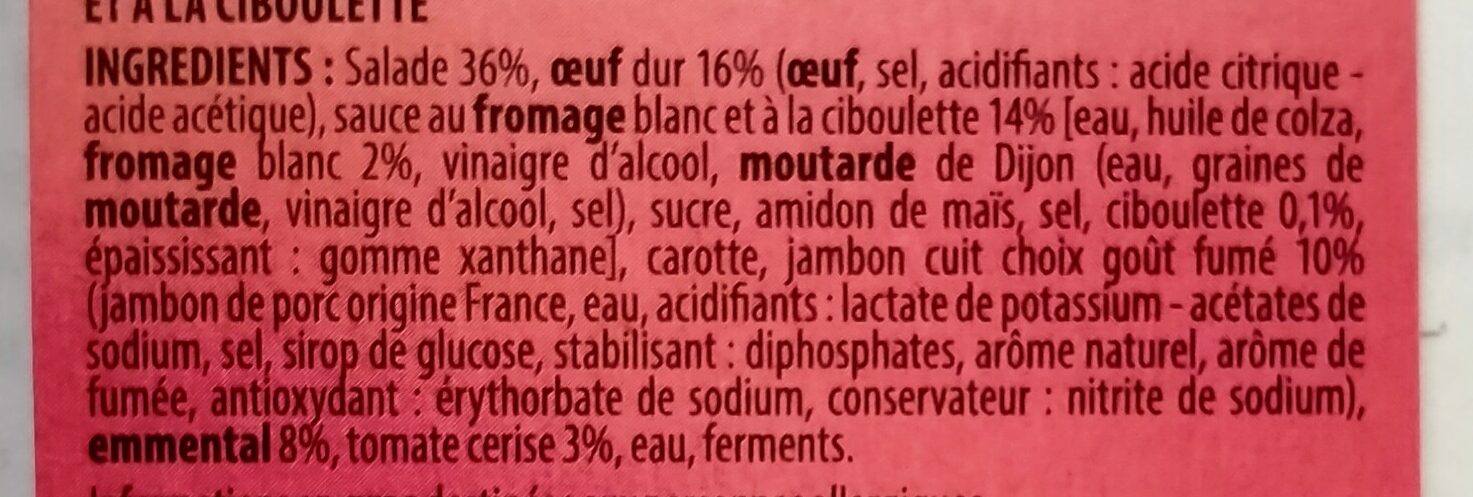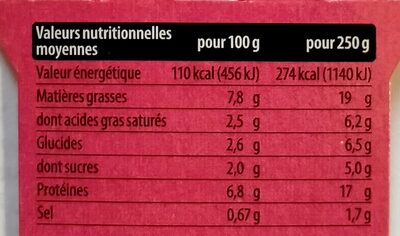Parisienne Jambon Emmental - Daunat - 250 g
This product page is not complete. You can help to complete it by editing it and adding more data from the photos we have, or by taking more photos using the app for Android or iPhone/iPad. Thank you!
×
Barcode: 3367651004885 (EAN / EAN-13)
Common name: Salade composée de salade, d'oeuf, de crudités, de jambon cuit choix goût fumé et d'emmental accompagnée d'une sauce au fromage blanc et à la ciboulette
Quantity: 250 g
Packaging: Plastic, Cardboard, Fresh, Protective gas, Refrigerated, Tray
Brands: Daunat
Categories: Meals, Fresh foods, Prepared salads, Fresh meals, Salads
Labels, certifications, awards: French meat, French pork, Made in France, Nutriscore, Nutriscore Grade A
Origin of the product and/or its ingredients: porc français
Manufacturing or processing places: France
Link to the product page on the official site of the producer: https://www.daunat.com/produit/nos-salad...
Stores: Leclerc, Carrefour, Magasins U, carrefour.fr, Carrefour market
Countries where sold: France
Matching with your preferences
Report a problem
Data sources
Product added on by segundo
Last edit of product page on by lemaitre.
Product page also edited by autorotate-bot, chrysler, didierg, driveoff, foodvisor, hungergames, kiliweb, magasins-u, moncoachigbas, moon-rabbit, openfoodfacts-contributors, packbot, phoenix, quechoisir, roboto-app, tototiti, vaporous, yuka.VkxFN1Fhc0RnZE5YcHRndzhUclkyOVl1OWIrNVZrQ1JET0F4SUE9PQ, yuka.WW9jSkZLWUFxUE5WbXNVVTNpcno5OWhKbmE2cVhHV2FLN283SVE9PQ, yuka.WmZBK0xvVUIvTlZYZ01RSCt4UG81ZXQxMjZheVVtYStDUE1BSVE9PQ, yuka.YUtaZUg2SllqUGNraDhVbHBUSHM0dkl0NGIrWWYyMlpkTkU5SUE9PQ, yuka.sY2b0xO6T85zoF3NwEKvlhFDWNDU_SzpGzvmkHfTy-WwfsHwZONuz4j9N6s.
